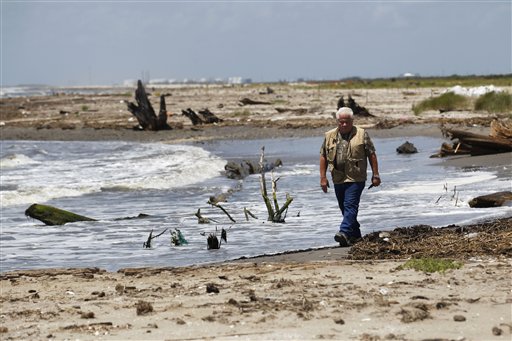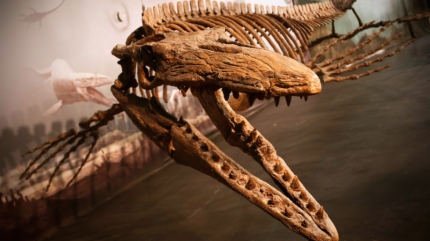
© Gerald Herbert/AP PhotoForrest Travirca III, walks along Port Fourchon Beach as he searches for artifacts from Pre-historic American-Indian settlements in Caminada Headland, La., Tuesday, June 28, 2011.
Cleanup after the BP oil spill has turned up dozens of sites where archaeologists are finding human and animal bones, pottery and primitive weapons left behind by pre-historic Indian settlements.
It's a trove of new clues about the Gulf Coast's mound dwellers more than 1,300 years ago, but scientists also fear the remains could be damaged by oil or lost to erosion before they can be fully studied.
So far, teams of archaeologists hired by the oil giant have visited more than 100 sites and sent back a growing list of finds to labs for radiocarbon dating and other tests, though extensive excavations haven't been done. Scholars have also accompanied cleanup crews to make sure they don't unwittingly throw away relics.
Larry Murphy is lead archeologist for a council of government agencies and trustees overseeing the oil cleanup. He says neither the discovery of the sites - nor the money to study them - would have come as quickly without the spill.


Comment: It seems like our ancestors knew a thing or two about proper nourishment. And we are not talking about a mere survival and preservation of body's heat during harsh periods. It appears that fat is the preferred fuel of human metabolism and has been for most of human evolution. It not only decreases inflammation and significantly increases energy levels, but improved and healthier brain activity facilitates creativity and human evolution.
Read the following articles to understand how currently promoted low-fat diets lead to slow degradation and danger, especially prior to the possible onset of the next Ice Age.
You've Been Living A Lie: The Story Of Saturated Fat And Cholesterol
A Metabolic Paradigm Shift, or Why Fat is the Preferred Fuel for Human Metabolism
Your Brain On Ketones: How a High-fat Diet Can Help the Brain Work Better